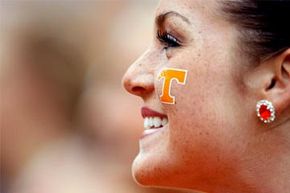Every year, the cost of higher education inches upward. For some schools, that might entail a only minor fee, while others must institute full-fledged tuition hikes. The 2009 - 2010 school year was no exception. According to CollegeBoard.com, students paid anywhere from $172 to $1,096 more to attend college than the previous class. Those figures brought the average price tag for a four-year public undergraduate program up to $7,020 per year and $26,273 for private schools.
With the ever-mounting costs of attending college and the current economic recession, students might wonder whether they can even afford a degree. Fortunately, there's another side to this education-cost coin. Despite rising tuition, there are plenty of financial aid opportunities for college hopefuls to seize upon. In fact, students in the United States gobbled up $168 billion in available aid in 2009 [source: CollegeBoard.com].
Advertisement
The first step along the way to acquiring financial aid is filling out the Free Application for Federal Student Aid (FAFSA). Although the name might sound like the FAFSA only applies to federal aid, individual schools also use it to determine the "expected family contribution" (EFC), or the amount of money that a family is expected to be able to pay toward tuition, based on its income. By comparing the EFC to the tuition and fees, colleges can then assess the amount of financial aid students need in order to attend. From there, students can seek out federal, state and private loans, along with grants and scholarships to fill in any financial gaps.
But what happens when the combination of financial aid -- grants, loans or scholarships -- exceeds the amount of tuition, fees and housing? If that money isn't needed to cover education costs, students might be entitled to a financial aid refund check.
Advertisement



